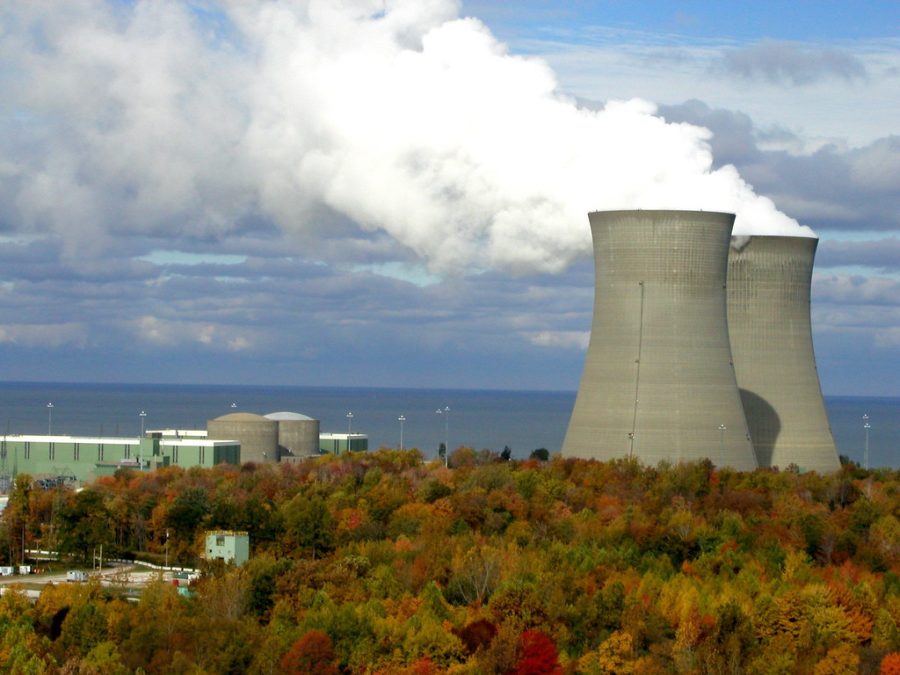Nuclear power is here to stay
The efficiency, reliability and safety of nuclear power make it an indispensable form of energy as we move into a greener future–it’s a necessity, not an option.
As the world shifts towards using green energy to run the power grid, many have questioned how to best transfer the power grid to fuel sources that will not harm the environment. Solar and wind power have proved to be incredibly productive and affordable sources of energy with very low impact on the environment. Despite the plethora of clean energy sources available nowadays, green energy still makes up only 20 percent of America’s power plants. With almost half of that power coming from nuclear power plants, the shutdown of nuclear energy in America will significantly slow down our progress toward a greener future.
“I think we’re crazy to retire existing nuclear reactors before their lifespan is over,” said Science teacher Geoff Ruth. California’s last nuclear plant is barely surviving fierce negotiations within the state government to remain operational. With 17 percent of California’s green power coming from that plant according to the California Energy Commission, its shutdown would present a significant barrier to emissions-free energy within the state. The United States has shut down over 40 nuclear power plants as of May 2022, which both wastes valuable investments into green energy and reduces the amount of emissions-free power available to the national power grid. Nuclear power plants, despite negative press depicting them as unsafe and volatile, are incredibly effective and safe forms of energy production and are indispensable as transitional power sources.
In 2021, nuclear power plants operated at full capacity over 92 percent of the time. Natural gas and coal plants, often touted as the paramount of reliable power, pale in comparison, only being able to operate at full capacity around half of the time. Downtime in power plants wastes electricity, resources, and labor, generating significant adverse effects on the environment and the economy. In contrast, nuclear power plants have the ability to run 24/7 for up to two years without a shutdown or pause for maintenance.
Despite its portrayal in the media as a cancer-causing disaster waiting to happen, nuclear power is the safest form of power in the world by a significant margin. According to the World Health Organization (WHO), nuclear power is four times safer than wind power and 10 times safer than solar power. When compared to non-green energy such as coal, the difference is startling – the WHO reported that coal causes 161 deaths per terawatt hour (TWh), while nuclear causes only 0.04 – over 4,000 times safer.
Nuclear power is a highly regulated industry, and one with incredibly high safety standards. The United States Military’s nuclear-powered ships, for example, have worked for 50 years without a single harmful incident involving a nuclear reactor or nuclear waste, according to a report by the Japanese Ministry of Foreign Affairs. Many people who oppose nuclear power will cite events such as Chornobyl as reasons that nuclear power is unsafe, but in reality, modern safety standards and smart placement of reactors make nuclear meltdowns virtually impossible. According to the World Nuclear Association, there have only been 46 deaths attributed to nuclear power. When compared to hydropower, whose largest accident led to 171,000 deaths (due to subsequent famine and disease), and air pollution from fossil fuels which leads to over eight and a half million deaths per year, the safety of nuclear power is unmatched.
Solar and wind power are likely to be the most important new sources of energy in the world. In a green future, the price of power is very important – people will invest in power they can afford, and power with high profit margins. “…[In terms of] economics,” said Ruth, “nuclear is beat by solar plus battery storage.” While nuclear costs over 40 cents per kWh, solar power costs only six to eight cents per kWh. Additionally, solar plants can be built faster and with a lower environmental impact than new nuclear power facilities. There is no magic solution for green energy, and no single power source will be able to safely and reliably support humanity’s advance into an environmentally friendly future. However, the exceptional reliability, unheard-of safety and high energy output of nuclear power make it an indispensable form of power — and shutting down reactors would represent a significant step backward in our advance toward a greener future.


